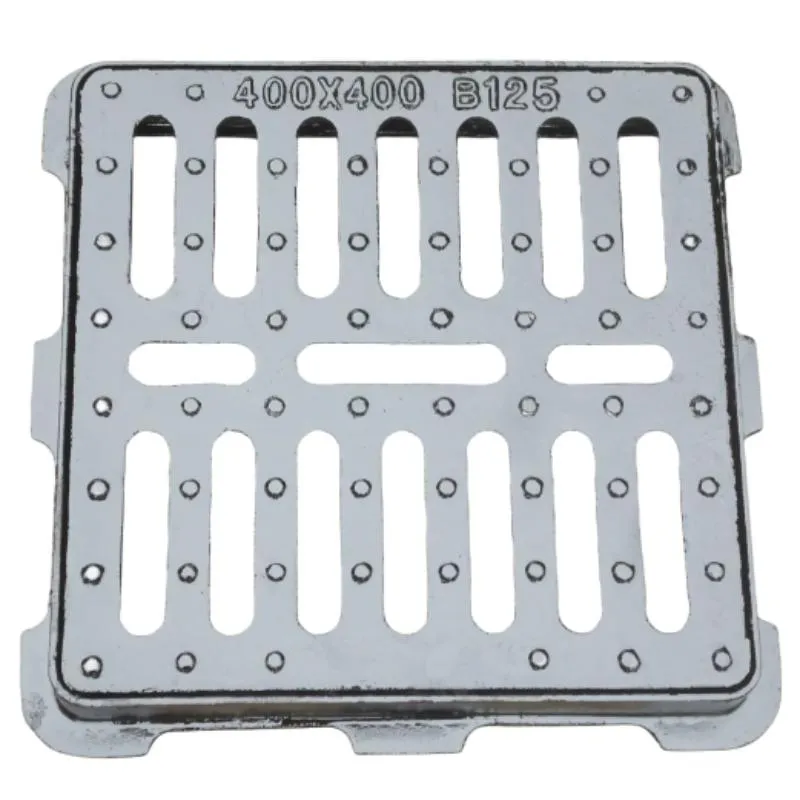gully grate
The Importance of Gully Grates A Hidden but Vital Infrastructure
When we walk through urban environments, the intricacies of city planning often go unnoticed. One essential yet overlooked component of urban drainage systems is the gully grate. This unassuming piece of metal or plastic plays a crucial role in managing stormwater, protecting our infrastructure, and maintaining hygiene in our streets. This article aims to shed light on gully grates, their function, design, and importance in urban landscapes.
Understanding Gully Grates
At its core, a gully grate is a drainage feature installed on streets and pavements to allow rainwater to enter the drainage system. These grates are typically placed above drainage channels or gulleys, which funnel excess water away from paved surfaces and into underground drainage systems. The design of gully grates varies significantly depending on local regulations, climate, and the anticipated volume of water runoff. Common designs include slotted grates, mesh grates, and decorative grates that blend into the urban aesthetic.
Functionality and Benefits
1. Stormwater Management The primary purpose of gully grates is to efficiently manage stormwater runoff. During heavy rainfall, streets can quickly become flooded if there is no proper drainage. Gully grates help prevent water pooling, reducing the risk of accidents and facilitating smooth traffic flow.
2. Hygiene and Sanitation In addition to managing water, gully grates also play a role in sanitation. They help to filter debris and prevent larger items, such as leaves or waste, from entering the drainage systems. This filtration helps maintain the quality of water being diverted, minimizing the impact on local waterways and preventing blockages that could lead to sewage overflows.
3. Environmental Protection By managing stormwater effectively, gully grates contribute to environmental conservation. They help reduce soil erosion, protect aquatic ecosystems from siltation, and promote the infiltration of water back into the ground, aiding in groundwater recharge.
gully grate

4. Enhancing Urban Aesthetics With advancements in design, gully grates can also enhance urban aesthetics. Decorative grates can become part of public art, integrating function with beauty and making urban environments more visually appealing.
Challenges and Maintenance
Despite their importance, gully grates face several challenges. One of the most significant issues is the accumulation of debris. Over time, leaves, dirt, and litter can block the grates, severely limiting their efficiency. Regular maintenance is crucial to ensure they function correctly. Many municipalities use automated systems and community programs to encourage regular cleaning, but public awareness is key.
In addition, improper design or installation can lead to further complications, like overburdened drainage systems or inadequate water capture. It is essential for urban planners and civil engineers to consider local climate conditions, topography, and expected runoff when designing drainage systems and selecting gully grate types.
Conclusion
In conclusion, while gully grates may seem like a minor urban detail, their role in stormwater management, sanitation, and environmental protection is undeniable. They are a vital part of sustainable urban planning, allowing cities to manage heavy rainfall efficiently and keep our streets safe and clean. As urban areas continue to expand and face the challenges posed by climate change, the importance of robust drainage systems, including well-designed gully grates, will only grow.
It is essential for city planners, engineers, and the public to recognize and advocate for the necessary investments in urban infrastructure to maintain and improve these systems. By appreciating the hidden but vital components of our cities, we can contribute to a more sustainable, efficient, and beautiful urban future.
-
The Smarter Choice for Pedestrian AreasNewsJun.30,2025
-
The Gold Standard in Round Drain CoversNewsJun.30,2025
-
The Gold Standard in Manhole Cover SystemsNewsJun.30,2025
-
Superior Drainage Solutions with Premium Gully GratesNewsJun.30,2025
-
Superior Drainage Solutions for Global InfrastructureNewsJun.30,2025
-
Square Manhole Solutions for Modern InfrastructureNewsJun.30,2025
-
Premium Manhole Covers for Modern InfrastructureNewsJun.30,2025
